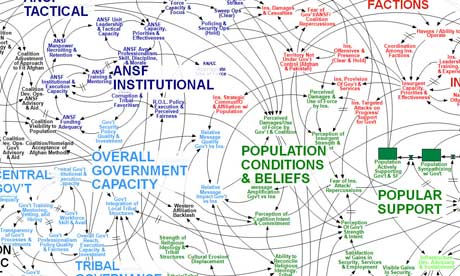“At a minimum, a presentation format should do no harm.Yet PowerPoint routinely disrupts, dominates, and trivializes content.Thus PowerPoint presentations too often resemble a school play – very loud, very slow, and very simple.” – Edward Tufte
 There’s a popular joke in the presentation world that goes something like this: “The only people who use PowerPoint are those who have no power and make no point.” It’s a great generalization, and at SpeakWell Partners, we certainly try to get our clients to consider a presentation without the use of PowerPoint, but the truth is, compelling visuals can really enhance a presentation. Not so with the slide on the left which was allegedly used in a high-ranking U.S. Military briefing on the war in Afghanistan.
There’s a popular joke in the presentation world that goes something like this: “The only people who use PowerPoint are those who have no power and make no point.” It’s a great generalization, and at SpeakWell Partners, we certainly try to get our clients to consider a presentation without the use of PowerPoint, but the truth is, compelling visuals can really enhance a presentation. Not so with the slide on the left which was allegedly used in a high-ranking U.S. Military briefing on the war in Afghanistan.
After presenting the key findings of Edward Tufte (the godfather of data display) one of my students asked, “What if you work in an organization that requires you to use a lot of bullet points?” I responded by saying that perhaps that organization has mistakenly conflated two distinctly separate display options: the visual display and the handout. They are not the same thing and never should be. If I have done my job well, then my PowerPoint slides will be very confusing to someone who was not in the room during the presentation.
Don Norman, author of Emotional Design agrees that the majority of PowerPoint presentations are bad, but, he says “don’t blame the software. Most writing is awful, too, but I don’t go railing against pencils or chalk.” He goes on to give the most salient advice to any presenter – in any industry: “Text is the last thing people should put on a PowerPoint slide. In fact, I would argue that supporting visuals – charts, diagrams, illustrations, photos and video – are the only things that should appear on a slide.”
If you want to make a lasting impression then follow Don’s advice. Put all the dense, dull, and sleep-inducing text in your Microsoft Word handout. You can feel good that you conveyed all the important information while at the same time keeping your audience awake and enthused during your actual presentation.
– Barbara

